
Networking doesn’t top many people’s lists of favourite activities. Let’s face it, the word comes with some baggage. Many people have come to associate it with awkward interactions and self-interested, empty chit-chat at corporate mixers.
But networking is simply the process of actively widening your career-related sphere.
It can take many forms. And in doing it, you’ll gain a better understanding of work that will suit you, what you can offer, where you need to upskill and how your working life can evolve. And the more people you have in your network, the more likely you are to be aware of new opportunities.
At key moments in your networking journey, you’ll be getting in touch by email to begin a professional relationship or keep one going.
You may send a networking email to:
- request a call or meeting for research purposes (sometimes called an informational interview)
- follow up after a call, meeting or networking event
- ask for referrals.
We’ll look at examples for each of these emails shortly.
First, consider that it’s important to look at networking as a long game: you won’t get far emailing a stranger and outright asking for a job. Instead, think in terms of investing in people and relationships.
And because you’re dealing with people, it helps to know about the psychology at play. Specifically, the psychology of persuasion and of helping.
People want to help
If you feel anxious at the thought of sending a networking email, know that that’s entirely normal. As social psychologist Heidi Grant notes in this Harvard Business Review article, asking for help comes with potential social threats including rejection or looking ‘weak’. And these perceived threats activate our minds in the same way that physical pain does.
But while we may be wrapped up in the supposed risks we’re taking by reaching out, it’s important to remind ourselves of one thing: on the whole, people like helping. It feels good.
Of course, we all know how busy our peers and connections are. So, we should use what we know about psychology to tweak how we ask, to reinforce the positive effect in our target’s mind. Grant gives us three ‘reinforcements’ or cues to incorporate into our ask:
In-group
This cue is about our innate need to belong to – and look after – a social circle. In what ways can you suggest that you and the potential helper are on the same team? This can be as simple as using the word ‘together’, or highlighting where you have shared experiences, goals or feelings. Perhaps you attended the same university or work in the same field. Maybe you share a passion for technological innovation, ocean health or brand responsibility. Or you might simply have endured the same rambling keynote address at a conference.
Positive identity
We’re more motivated to help when we see our helpful actions – or our ability to help – as being inherent characteristics that make us who we are. You can strengthen a potential helper’s motivation by indicating that they’re uniquely positioned to do the helping. Showing gratitude – even with a simple ‘Thanks’ or ‘Many thanks’ sign-off – will also bolster your recipient’s positive identity.
Effectiveness
A key motivator for a would-be helper is knowing that their help made a difference. What effect did they (or will they) have in helping you? Be specific in your initial email about what help you’re asking for and what getting it will do for you. And follow up afterwards to update them on the difference their help made.
The psychology of persuasion
In his classic book on the art of persuasion, Influence, professor of psychology and marketing Robert Cialdini cites six principles that drive people’s decisions:
Reciprocation
Doing something for someone makes them inclined to want to do something for you in return. Though stating this explicitly (‘If you do X for me, I’ll do Y for you’) is actually not a good idea, always thinking how you can offer value to the people you contact is fundamental to networking.
Commitment and consistency
People like to see themselves as consistent and feel compelled to stand by commitments they’ve made. They generally favour consistency in others too.
Social proof
If people are uncertain about what to do or how to behave in particular situations, they tend to look to those around them to provide guidance.
Liking
We’re more influenced by those we like – and we like people for a range of reasons: we may share traits or experiences, or they could pay us compliments or make us laugh.
Authority
People tend to respect those in positions of authority and like to follow the lead of experts. For example, a colleague you’ve never met may be more inclined to help you if you’re referred by a senior team member.
Scarcity
The less there is of something, the more people value it.
Using the principles of persuasion in your networking
Think creatively about how to use any and all of these principles in your various networking and job search activities.
For example, adding endorsements to your LinkedIn profile provides social proof of your abilities. If you’re in the late stages of the interview process, you might mention an opposing offer to your favoured company – making yourself a potentially scarce commodity. Chatting with someone at a networking event? Giving them the opportunity to commit to continuing the conversation will increase the odds they’ll be inclined to have a call or meeting later.
In his 2016 book Pre-suasion, Cialdini added a seventh principle: unity. If we feel like we have a shared identity with another person, we’re more likely to be influenced by them. Notice how this echoes the ‘in-group’ cue we looked at earlier. This is a particularly powerful principle to bring into your emails.
Best practice for networking emails
Here are some more general points to keep in mind:
- Keep every email short: around two to three paragraphs.
- Choose your subject line carefully and put the most important words first. (More on this later.)
- Focus more on them than you (and always think about how you can give at least as much as you get).
- Never put people on the spot, and never ask for a job in a networking email.
- Be natural, personalise each message and make it clear what you’re asking for. And be prepared to graciously accept if they offer something different from what you requested.
- If you ask for a meeting, be specific about how long you’re asking for (and don’t ask for too much).
Networking email: before and after
Let’s look at two versions of a networking email to see what does and doesn’t work.
Dear Ms Langham
It was a pleasure and privilege sitting through your lecture last month. I was particularly intrigued by the demonstration of the movement of value across the value chain depending on business cycles.
I have worked for my entire career in the Supply Chain arena with the majority of my time devoted towards Procurement. The last eight years has been spent in businesses with very low margins and as a result, a very large focus on the procurement function of the organisations. Needless to say, I felt that similar needs, both strategic and tactical, would perhaps be placed on such a function at BP, albeit at a very different scale and scope.
I am very interested in understanding how procurement works at BP and would be very grateful if you could spare some time from your obviously busy schedule to have a brief chat, or guide me to someone in your organisation who can help me with this.
I would also like to thank you for accepting my LinkedIn request and will await your response eagerly.
Regards
Martin Corden
Now, this email isn’t terrible. But it could be much better.
It’s a little too long and rambling, and its focus is almost entirely on the writer, Martin, not the recipient, Ms Langham. It spends too long on the writer’s career background, without any immediately clear reason why the reader should care.
The context at the beginning is flattering but may not be specific enough to jog Ms Langham’s memory. Similarly, the request for help – while it does acknowledge the recipient’s busy schedule – isn’t well defined. And there’s a suggestion of pressure in ‘I […] will await your response eagerly.’
Here’s the rewrite:
Dear Ms Langham
It was a pleasure to listen to your lecture on 22 February at LSE about supply chains in the energy sector. And thank you so much for agreeing to help us with our career questions.
Your comments about the movement of value across the value chain depending on business cycles really resonated with me, especially because my entire career has been in supply chain and procurement. Given the thought-provoking nature of your lecture, I would be very keen to understand further how procurement works at BP.
Would you (or one of your colleagues) be able to spare some time (10–15 mins) from your busy schedule to briefly chat about this? I can call you (or your colleague) at your office number or schedule a Zoom meeting at a time in the next few weeks that works for you.
Many thanks
Martin Corden
+44 (0)7777 777 777
Here, Martin again opens with a compliment, but this time is very clear about the event they have in common. The second sentence shows gratitude while gently reminding the recipient of the commitment she made.
This time, Martin is more succinct and neatly references his work history in the context of a particular theme in the lecture, which is also a shared area of interest. He indicates that Ms Langham – the creator of a thought-provoking lecture – is particularly qualified to help.
The request is specific and doesn’t ask for too much. He also gives the option of an alternative way to help: being put in touch with a colleague instead. And he makes it clear he respects Ms Langham’s busy schedule.
Like Martin here, always include your phone number in your email signature – this makes it easy to reach you should your contact choose to simply pick up the phone.
Now let’s look at some specific networking email examples.
How to write a follow-up email after a networking event
After meeting someone at an event, it’s a good idea to drop them a line to solidify the connection.
Keep your email short, conversational and friendly. Note where you met in the subject line and at the start of the email, and mention something you spoke about – be it professional or personal. This shows you were listening and could already give you the chance to suggest an effect your new contact has had.
Try to share something they’ll find useful, like a relevant article or blog. And open the door to maintaining the relationship.
Subject: Great to meet you at the CRO Expo
Hi Dan
It was great meeting you at the expo yesterday and having time to chat. Thanks again for explaining how you’ve incorporated customer surveys into your processes – I’m going to suggest to my manager that we do the same.
Here’s that article I mentioned about the importance of getting executive buy-in: [link]
Let’s keep in touch.
All the best
Olivia
You may wish to arrange to meet or speak again with your new contact. Here, the email formula is similar: remind them of your ‘in-group’ connections and key elements of your conversation.
But you can also call on the principle of commitment by picking up on any agreement you made to speak or meet again.
Remember to be specific in your ask and make it as easy as possible for them. Suggesting particular days helps to focus the decision-making mind – an ‘anytime’ approach can lead to decision paralysis. But also being clear you can work around them shows respect for their schedule and means they’re free to choose other days if that suits them better.
Subject: Great to meet you at the expo – book a coffee?
Hi Dan
Really good to meet you yesterday. It was great to get some insights into how other organisations implement CRO practices – as well as to discover that we’re not the only team who find getting buy-in a challenge!
You mentioned you were happy to pick up the conversation again, and I’d love to take you up on that. Would you have time for a 20-minute coffee (virtual or in person) in the next few weeks? Wednesdays and Fridays are generally best for me, but I can fit with whatever works for you.
All the best
Olivia
Want a little help every time you sit down to write a networking email? Download all six templates (in either Word or a Google Doc) here.
How to write an email requesting a call, meeting or an informational interview
One of the best approaches you can take in networking is to ask for advice or an informational interview. It is a way to grow a relationship while gaining valuable insights. It is also a lower-pressure request than immediately asking for a referral, and people tend to feel flattered to have their wisdom sought out.
You can tweak this basic structure and use it in many situations: with a colleague you haven’t yet met or the contact of a shared connection, and even with a stranger whose career you admire. But always start from a place of connection, if you can (even a thin one). Or else explain how you found them.
Noting a person in common is ideal, as you will be essentially pre-approved. But you could also note a common event, university, membership body, passion project or LinkedIn group.
Subject: Would love your advice about a move into UX (Jo Orton intro)
Dear Jenny
My name is Tom Ferguson and Jo Orton suggested I get in touch with you. I am currently working in account management, but I’m interested in making a career move into user experience design. Jo says that you are always the first person she thinks of on the subject, since you basically started the UX department at YourCorp!
It would be fantastic to have a 15–20 minute chat about your transition into the field and your work since. I’m sure that hearing about your experience would be extremely helpful as I explore this potential change.
Would you have any availability for that in the next few weeks? I’d be happy to come to you or to speak on the phone or over Zoom. I’m free all afternoon every Friday, but I can make most times work, so please just let me know what’s best for you.
Many thanks
Tom
If you get your interview, be sure to let them do most of the talking, so you can soak up as much of their experience as possible. And take good notes – they’ll soon come in useful.
How to write a thank-you email after a meeting or call
If you have a call or meeting, always follow up with a thank-you message within a day. This can follow a similar formula to the follow-up email after a networking event.
However, remember how helpers like to know how effective their help has been? You can hint at that by specifically mentioning an element of their advice or an action they suggested and how you are taking it forward.
Subject: Thank you for your insights
Hi Jenny
Thank you again for your time yesterday. I really enjoyed our conversation.
I’ve already requested to join that LinkedIn group and ordered the ‘Bible of UX’ book you recommended – and I can’t wait to get stuck in!
I’ll let you know how I get on.
Best wishes
Tom
The ‘Closing the Loop’ technique
If you are keen to grow that professional relationship, don’t leave it there. Entrepreneur and author Ramit Sethi recommends using a technique he calls ‘Closing the Loop’ to differentiate yourself. The approach ties in the principle of reciprocation and the cue of effectiveness.
A week or two after your thank you, send another short email. Don’t ask anything of the recipient – crucially, not even a reply. Instead, send them something you think they’ll value based on everything you now know about them: it could be an article, blog post, website, tool or resource – even a useful contact.
Hi Jenny
I hope you’re well.
No need to reply to this – but I wanted to point you to this blog post on an innovative new approach to user testing, in case you haven’t seen it already. Could be a game changer!
Best wishes
Tom
Two to three weeks later, you’ll send another email to ‘close the loop’. How has their help already paid off? Here’s where you can tell them how effective their advice has been. Be specific.
From this foundation, you can ask for other people they could refer you to.
Hi Jenny
I have a quick progress update: after connecting with several members of the LinkedIn group you recommended, I’ve learned about a training programme I can join alongside my current role. I signed up! Thank you for the great suggestion.
It’s been so good to connect with people who are excited about this field. If there’s anyone else you think I should speak with, please do let me know.
And I’ll let you know how it goes.
All the best
Tom
The key to this technique is that you have repeatedly put your contact’s needs ahead of your own before you ask them for anything more. You also stand out as someone who takes action.
Writing an effective subject line for your networking email
There are techniques that are good practice for any subject line, and you can put some of them to use here too:
- Convey a quick win: Five minutes of your advice on my CV
- Suggest timeliness or urgency: In your area tomorrow – time for a 10-minute coffee?
- Refer to an expectation: The market trends info I promised (business growth conference)
- Put the most important words first: Professor Sandberg suggested I contact you
As you can see, combining these techniques with some of the principles and cues we’ve looked at make your networking emails’ subject lines even more powerful. And that means your emails are more likely to be opened, read and acted on.
Hopefully by now you’re starting to feel inspired at the idea of contacting someone who could help change the course of your career. Ultimately, networking in all its forms is simply about relationships. At its best, it allows people to support each other, help one another (and themselves) succeed, and to matter. And that’s something we can all feel good about.
Image credit: SFIO CRACHO / Shutterstock





